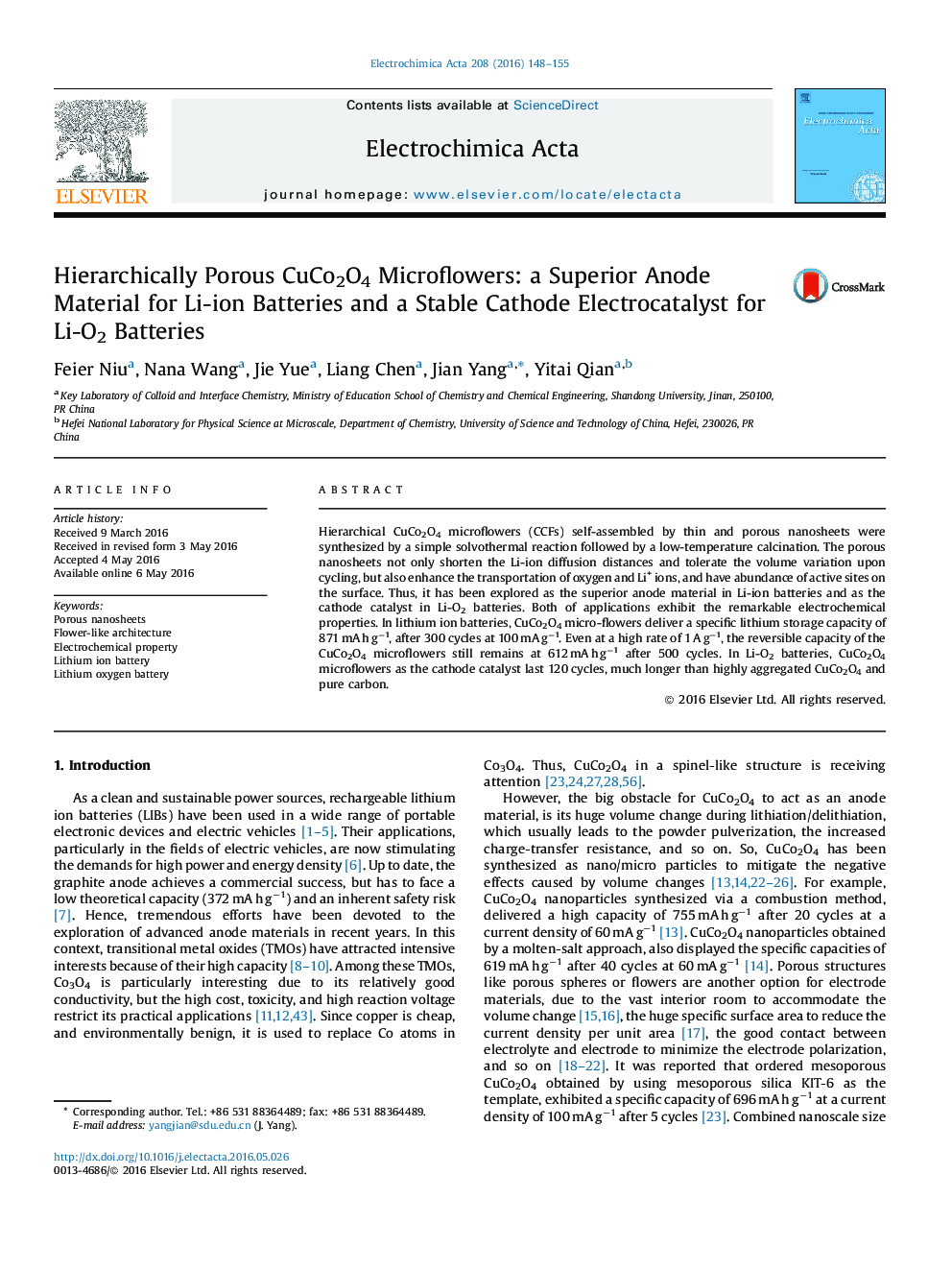| Article ID | Journal | Published Year | Pages | File Type |
|---|---|---|---|---|
| 182928 | Electrochimica Acta | 2016 | 8 Pages |
•CuCo2O4 microflowers assembled by porous nanosheets are synthesized.•Porous structure and 2D morphology make them excellent in Li-ion/Li-O2 batteries.•In Li-ion batteries, the capacity is ∼612 mA h g−1 after 500 cycles at 1 A g−1.•In Li-O2 batteries, the life lasts 120 cycles by limiting capacity to 1000 mAh g−1.
Hierarchical CuCo2O4 microflowers (CCFs) self-assembled by thin and porous nanosheets were synthesized by a simple solvothermal reaction followed by a low-temperature calcination. The porous nanosheets not only shorten the Li-ion diffusion distances and tolerate the volume variation upon cycling, but also enhance the transportation of oxygen and Li+ ions, and have abundance of active sites on the surface. Thus, it has been explored as the superior anode material in Li-ion batteries and as the cathode catalyst in Li-O2 batteries. Both of applications exhibit the remarkable electrochemical properties. In lithium ion batteries, CuCo2O4 micro-flowers deliver a specific lithium storage capacity of 871 mA h g−1, after 300 cycles at 100 mA g−1. Even at a high rate of 1 A g−1, the reversible capacity of the CuCo2O4 microflowers still remains at 612 mA h g−1 after 500 cycles. In Li-O2 batteries, CuCo2O4 microflowers as the cathode catalyst last 120 cycles, much longer than highly aggregated CuCo2O4 and pure carbon.
Graphical abstractFigure optionsDownload full-size imageDownload as PowerPoint slide
